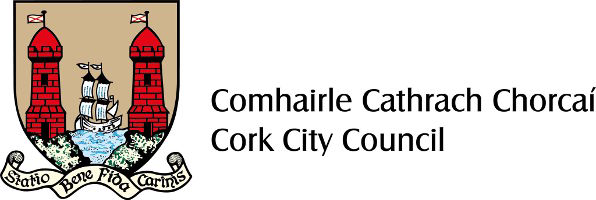A Brief History of Cork City Libraries
Cork has long had significant collections of books for both learning and pleasure, from the time of the monastic community in Gillabbey, through to the flowering of various institutions in the early nineteenth century, such as the Cork Literary and Scientific Society, the Royal Cork Institute, and the Cork Cuvierian Society. It was not until the last decade of the nineteenth century, however, that the public library service began in the city. While Cork was the first Irish City to adopt the Public Libraries (Ireland) Act of 1855, it waited until December 1892 to open a library service, in what is now the Crawford Municipal Gallery.
In 1905, a purpose-built library was opened on Anglesea Street next to City Hall, thanks to a grant from the renowned benefactor of libraries, Scottish-born Andrew Carnegie. This elegant building lasted for only 15 years, until 1920, as it and its contents were destroyed by fire, along with City Hall and much of the city centre, by Crown Forces retaliating against continuing guerrilla activity by the IRA. The burning of the Carnegie Library left the city without a public library service until 1924, when premises were provided on a temporary basis for a library in Tuckey Street. That service was transferred in 1930 to new premises behind a new Hiberno-Romanesque facade at nos. 57-8 Grand Parade.
Local Libraries
For many years this was the only public library service point in the city — except for County Library services in the Courthouse in Washington Street and at no. 18 Dyke Parade — until the City Library opened a branch library at St Mary's Road in 1972 near the North Cathedral. This was followed in 1974 by another suburban library in Tory Top Road, to serve the city’s south side. In quick succession there followed the establishment of a Mobile Library service in 1975; the Douglas Library in 1976, in a shopping centre in that suburb, jointly funded by the City and County Councils; and the major extension of the Central Library at Grand Parade in 1976-9.
The creation of the network of local libraries is perhaps the most important development in the history of the service. For many decades, people from all over the city, including children, had to come to the Grand Parade for their reading material, and long queues were a feature of those years. From the time of the opening of Douglas Library, the total number of issues of books from the suburban libraries has consistently exceeded that of the Central Library, illustrating how important the network of local libraries is to the people of the city. The Central Library on the Grand Parade remains the main focus of specialist services — such as reference & information, local studies, and music — the most important such facilities outside Dublin. Since the mid 1980s the network of local libraries has been extended with two new libraries serving the north side, in Hollyhill (1980) and Mayfield (1984).
On 31 May 2019, the service further expanded when the boundary revision of Cork City brought Ballincollig, Blarney and Glanmire Libraries into the city fold.
The service grows
The main feature of development in the last two decades has been the revolution in library provision through the use of information and communications technology, to enable the public and library staff to link with the world wide web, to access online databases, and to allow people with no access to PCs at home or at work to communicate by email with friends and acquaintances across the world. In addition, library administration routines (circulation, cataloguing, writing, and record-keeping) are greatly enhanced through the use of technology.
The latest use of information and communications technologies, involves digitisation: the scanning of maps, photographs, prints and other images to an online database, so that they can be viewed and downloaded via the web. One digitisation project in Cork City Libraries focussed on material of Cork interest. This project culminated in a very successful and well-used website Cork Past and Present, which was active until 2019. Cork Past and Present is currently unavailable pending redesign.
In the last few years the library service has continued to expand its services. A new building replaced the former Tory Top Library in 2005, and Bishopstown Library, a brand new service for the western suburbs opened in November 2006. Planning for a library service in the Blackrock–Mahon area has already started. In March 2007, a van-based library service for housebound members of the library was introduced. Plans for a new Central Library are at an advanced stage. While the new Central Library is being built, Central Library services will be temporarily dispersed to other premises in the city centre.
Cork City Libraries is now well established as an integral feature of the city’s information resources and cultural landscape.
In 2005, a history of Cork City Libraries was published - A Grand Parade: memories of Cork City Libraries (Cork: Cork City Council, 2005). Copies are available to borrow, both physical and from BorrowBox, it can be viewed in Flipping Book or download a PDF from the link below.
A Grand Parade: memories of Cork City Libraries (size 18.8 MB)
To read more books published by Cork City Libraries, visit our Library Publications page. Copies of most of the publications are available to buy at your local library.



